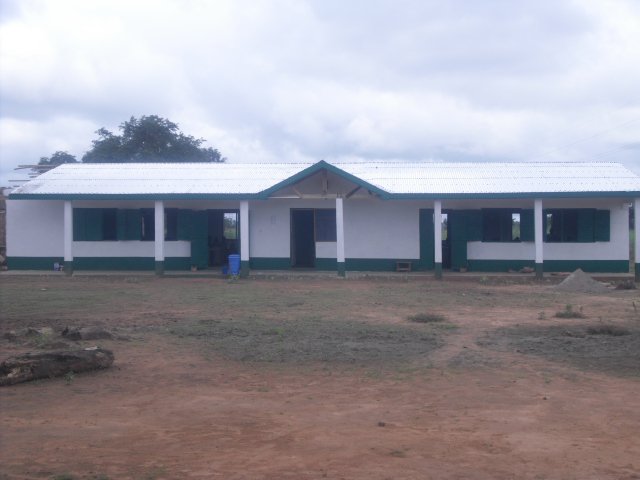


East Kilbride Rotary Club

The school roll was maintained at 94 girls for the year 2009-10, a large majority of whom lived in the new 100 bed dormitory, Kilbride House.
Following the receipt of generous and substantial donations from Procter & Gamble in Germany, and Kirklandpark Primary School in Strathaven, it was decided that a new block with three new primary classrooms and a Head Teacher's office suite would be built.
The block was completed in time for the start of the new academic year in September 2010, when the school roll was increased to 131 spread over five classes.
At the same time the school welcomed two new qualified teachers, whose salaries were funded by an annual grant awarded by the Souter Trust in March 2010. The new Head Teacher, Mrs Rachel Timothy, and the Senior Teacher, Mr Jimmy Waja, have brought great experience and enthusiasm which has improved the school's educational capability.

Prior to the building of the new classroom block, a new kitchen and food store together with a dining area were completed, and all the buildings were connected into the new electricity supply.
At various times the school has been delighted to welcome more volunteers from Scotland, Germany and Canada. Their contribution, both in and out of the classroom, was tremendous and both they and the girls benefited from the visits.
In August 2010 the school was delighted to receive a cheque for £6300 from East Kilbride Rotary Club which will fund an extension to Kilbride House and allow 180 girls to board. This money was raised in July at the second "Doon Ra Water" cruise on the Waverley, when Rotarians from sixteen clubs, their friends and LUS supporters enjoyed an excellent evening sail. Building work to the extension started in December 2010, at the start of the dry season. A separate building to house volunteers is also planned for completion in 2011
More of the school's land has been cultivated for crop production and it is hoped that sufficient funds can be raised to buy a reconditioned tractor, which will not only improve the amount of crops produced, but will generate income from hiring it to local farmers. Both these measures will help to make the school development more sustainable.
Since the school started in 2007 its growth has been remarkable and it is now recognised as having the best standard of education within the region. It is hoped that this growth will be maintained, and include a three year High School by 2015.
Home | Site Map | President | Club Board | Club Members | Charities | Our Visitors | Events | Speakers |